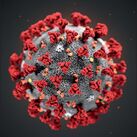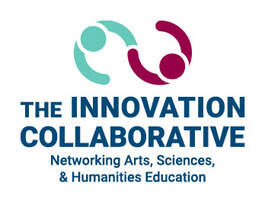 In the last newsletter we summarized just a few of the ways in which educators and guides have innovated to provide effective COVID learning environments when traditional methods were not possible. Over the past year, this process has progressed with additional thoughtful approaches and also research-based analyses of where we are and how we might move forward. Coping through Literature and the Arts More and more, thought leaders are looking beyond the current health crisis to plan for recovery. This includes not only economic and structural measures but also intense attention to psychological and emotional crises that the pandemic has caused. Increasingly, writers are recognizing the important role that literature and the arts have and must continue to play in this process. Here are just a few of the resources and articles that have appeared in the past few months: Trade Literature to Help Students Understand (Recommended by Angela Ding at Worlddreader.Org) The Unwelcome Stranger, by Drew Edwards & Diana Nawatene A grandfather advises children how to cope and be kind. I Love You, by Michael Ross Kwizera does not understand why she cannot be physically with her grandparents. Coronavirus: A Book for Children, by Elizabeth Jenner, Kate Wilson, Nia Roberts, & Axel Scheffler This non-fiction book answers questions children might have about the coronavirus. Hello, My Name is Coronavirus, by Manuela Molina Cruz An informative book narrated by the virus, itself. My Hero Is You, by Helen Patuck Sarah is upset because she cannot go to school. She feels unsafe. An imaginary dragon gives her comfort. The Virus-Stopping Champion by, Hilary Rogers A short story convinces children that they, too, can be champions. Read more at https://www.worldreader.org/now/6-books-to-help-your-children-understand-the-coronavirus/ Poetry for the Pandemic And the People Stayed Home (Family Book, Coronavirus Kids Book, Nature Book), by Kitty O'Meara A beautifully-illustrated poem that reflects the angst of in today’s world. Arts for an Anxious World - and More
How Art Helps Us Make Sense of COVID 19’s Incredible Toll. (from National Geographic) Contributed by Collaborative Innovation Fellow Julie Olson In a field outside of JFK Memorial Stadium in Washington, DC, artist Susan Brennan Firstenberg’s art helps Americans visualize our shared grief—a flag for every one of our COVID deaths. People come and help, praying and giving physical manifestation to what we are all experiencing. That is one of many memorials that have bloomed across the country. Another is by a thirteen-year old student in Sherman Oaks, California, who is spearheading the creation of a quilt. Eventually, all panels of this quilt will be assembled. Like these exhibits, other art installations throughout the country are addressing the country’s shared COVID experiences. https://www.nationalgeographic.com/history/2020/11/how-art-helps-make-sense-covid-19-incomprehensible-toll/ Our Kids Need Arts Education More than Ever: Here’s What’s Lost Without It (from Time) Frank Gehry calls on President Biden to empower school-age children to help heal themselves by restoring arts education because the arts…(help them) express and channel their emotions…and find their spirit’s song. He urges this emphasis on the arts so that children have the creative powers necessary to solve the problems we are leaving behind. https://www.msn.com/en-us/news/us/our-kids-need-arts-education-now-more-than-ever-heres-what-is-lost-without-it/ar-BB1c6Q9j?ocid=msedgdhp/ From the National Academies of Sciences, Engineering, and Medicine Teaching K-12 Science and Engineering During a Crisis The COVID-19 pandemic is resulting in widespread and ongoing changes to how the K–12 education system functions, including disruptions to science teaching and learning environments. This report describes high-quality instruction today, with tips for administrators, teachers and others. It emphasizes quality and equity, giving advice for managing and monitoring instruction. The free publication is available for download from the National Academies. https://www.nap.edu/resource/25909/interactive/?fbclid=IwAR0cufKezzb_-cCrlbi4skWinZk5SXkD2VQRlFV2zWdxZ86y-6qw8sy-xTw#.X3ZJmWof3RA.facebook And for lightness and pure joy… Pre-K Teacher Goes Viral After Sharing Virtual Classroom Dance Parties: “It’s About Bringing That Joy Factor” Azel Prather, Jr., went viral when he shared his virtual pre-school dance party on YouTube. Pre-pandemic, Prather taught preschool at Kipp DC Arts and Technology Academy in Washington, DC. He has long recognized those children who were “dancing in their seats” when they were supposed to be learning sight words. Dance was part of the program then and it is now, through Instagram and other social media tools. https://www.yahoo.com/lifestyle/pre-k-teacher-goes-viral-after-sharing-virtualclassroom-dance-parties-its-about-bringing-that-joy-factor-165553012.html The approaches above are different, but the message is clear. Moving forward, education will never be the same.
0 Comments
Your comment will be posted after it is approved.
Leave a Reply. |
